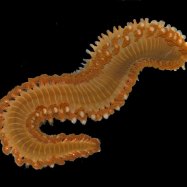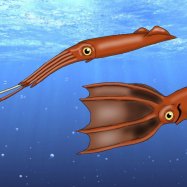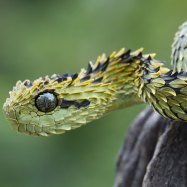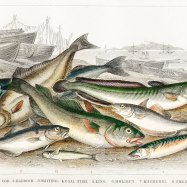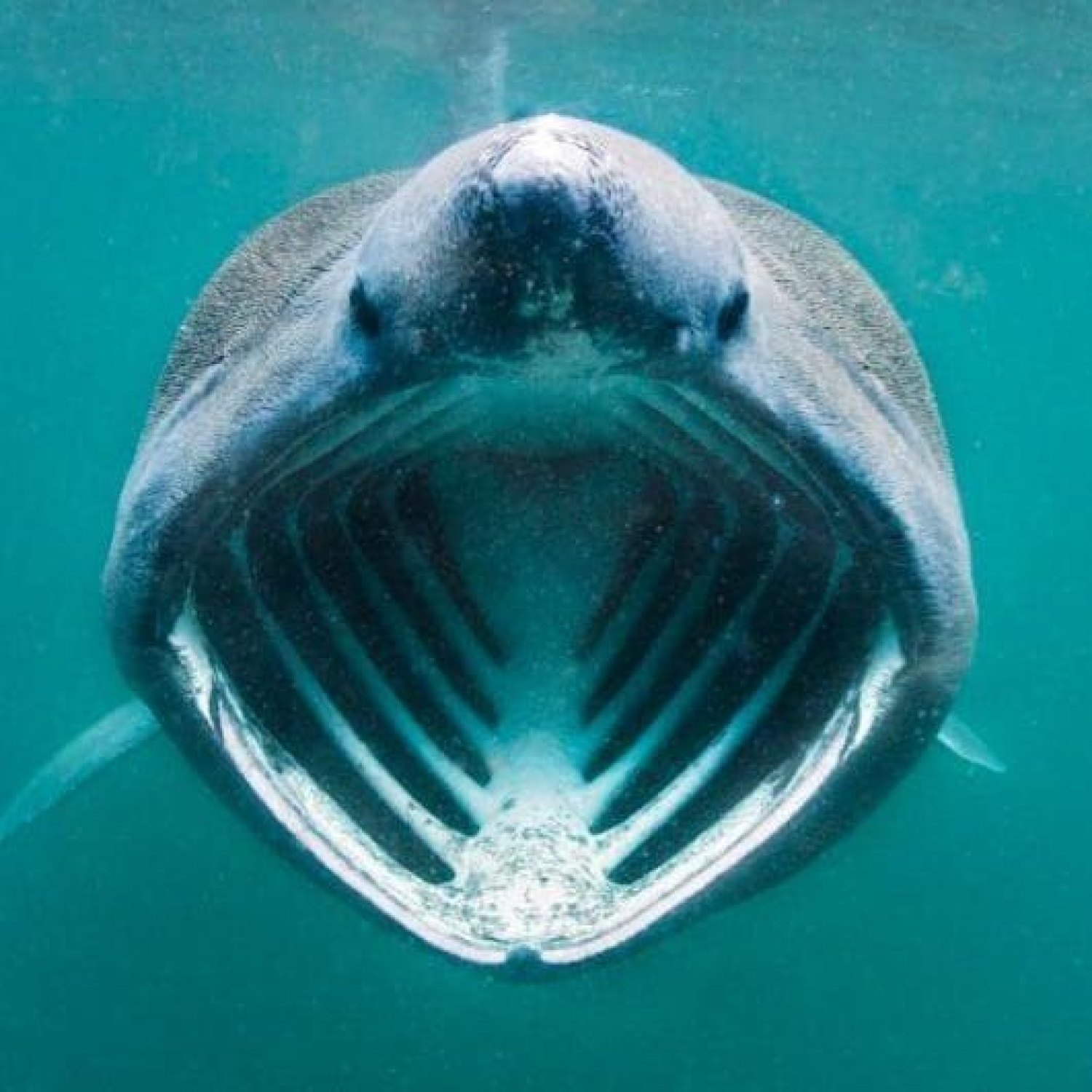
Basking Shark
Up to 10 meters (33 feet)
The Basking Shark, also known as the gentle giant of the sea, can grow up to 10 meters in length and can be found in open oceans and coastal waters. Its large and streamlined body, belonging to the Cetorhinidae family, allows it to gracefully glide through the waters. These magnificent creatures are a sight to behold and play a crucial role in maintaining the balance of our oceans. #BaskingShark #OceanLife #MarineConservation
Animal Details Summary:
Common Name: Basking Shark
Kingdom: Animalia
Habitat: Marine
The Majestic Basking Shark: A Gentle Giant of the Ocean
The ocean is the home to many diverse and mysterious creatures. Among them, one stand out for its impressive size, unique feeding method, and gentle nature: The Basking Shark.Scientifically known as Cetorhinus maximus, the Basking Shark is one of the largest fish in the ocean, growing up to an astounding 10 meters or 33 feet in length. Its sheer size alone is enough to capture the attention and imagination of anyone who sees it Basking Shark.
But there's more to this majestic creature than just its size. Let's take a deeper dive into what makes the Basking Shark such a fascinating and remarkable animal.
Classification and Distribution
The Basking Shark belongs to the kingdom Animalia and the phylum Chordata, class Chondrichthyes, order Lamniformes, and family Cetorhinidae. Its scientific name, Cetorhinus maximus, comes from Greek, with "cetos" meaning whale and "rhinos" meaning nose, which accurately describes its elongated snout.This gentle giant can be found in marine habitats worldwide, from the cold waters of the Arctic and Antarctic to the warm, tropical waters of the Pacific, Atlantic, and Indian Oceans. They are also occasionally spotted in shallow coastal waters, mainly during the summer months.
But despite being present in various parts of the world, basking sharks are still considered a vulnerable species due to excessive fishing and bycatch, which we will discuss later in the article.
Appearance and Body Shape
The Basking Shark's most defining feature is its large, gaping mouth that can open up to one meter wide, revealing hundreds of tiny, sharp teeth. This unique feature is not for hunting but for feeding, as the Basking Shark is a filter feeder Beago.Their body is covered in characteristic grayish-brown skin, which helps them to blend in with the surrounding water. This coloring also serves as camouflage, making them less detectable by predators like killer whales and great white sharks.
The Basking Shark's body shape is another remarkable feature, as they are one of the few sharks not known for their speed and agility. Instead, their body is designed for efficient swimming, with a large, streamlined appearance and pectoral fins that help them glide effortlessly through the water. They also have a massive tail fin, which they use to propel themselves forward.
Feeding Habits
As mentioned earlier, the Basking Shark is a filter feeder, meaning they feed on tiny organisms, such as plankton, krill, and small fish, by filtering them through their gills.To do this, they swim with their large mouth open, which creates a net-like filter made of their gills. As they swim, water full of food passes through their gills, trapping the tiny organisms, which they then swallow.
It's estimated that a Basking Shark can filter up to 2000 tons of water in an hour, an incredible feat, considering their size and slow swimming speed.
Fascinating Behavior
Basking Sharks exhibit some fascinating behavior patterns that have left marine biologists in awe. One of the most remarkable behaviors is the "basking" behavior, which is believed to be the origin of their common name.During this behavior, the Basking Shark will swim to the surface of the water and lie on its side with its large mouth open, basking in the sun's warmth as they feed. This behavior is usually observed during the summer months and is thought to be a way for the sharks to regulate their body temperature.
Another interesting behavior is the Basking Shark's ability to display a beautiful pattern of swimming. They often swim in groups, forming a "shark train" where they follow one another in a line, exhibiting synchronized swimming movements.
Conservation Efforts
Despite their impressive size and unique characteristics, Basking Sharks are still vulnerable to many threats, mainly caused by human activities. Overfishing and bycatch, where they are unintentionally caught in fishing nets and gear, are the greatest threats to their survival.Fortunately, conservation efforts are being made to protect these magnificent creatures. In 2018, the European Union Fisheries Council enforced a ban on intentionally capturing Basking Sharks. In addition, various organizations and research groups are working towards better understanding and protecting these gentle giants.
Interesting Facts
- The Basking Shark's liver can make up to one-fourth of its body weight and provides buoyancy, making it easier for them to swim near the surface.- Basking Sharks are slow swimmers, with an average speed of only 2.2 miles per hour.
- They have a unique way of mating, where the male bites the female's pectoral fins, which lifts her out of the water, making it easier for the male to insert his clasper.
- Despite being filter feeders, Basking Sharks have a small intestine, indicating that they also consume larger prey, such as small fishes and squids.
- They are one of the few shark species that can swim all around the world.
- Basking Sharks are known for their unconventional defense mechanism, where they leak the contents of their lower intestine, creating a cloud of foul-smelling gas to ward off predators.
- They are the second-largest fish in the world, only behind the Whale Shark.
In Conclusion
The Basking Shark is a magnificent creature that captures and intrigues the hearts of all who encounter it. Their large size, unique feeding method, and gentle nature make them one of the most fascinating species in the ocean.But with the increasing threats to their survival, it's essential to raise awareness and take action towards their conservation. As we continue to discover and learn more about these gentle giants, let us also strive to protect and preserve their existence, so future generations can continue to marvel at their beauty.

Basking Shark
Animal Details Basking Shark - Scientific Name: Cetorhinus maximus
- Category: Animals B
- Scientific Name: Cetorhinus maximus
- Common Name: Basking Shark
- Kingdom: Animalia
- Phylum: Chordata
- Class: Chondrichthyes
- Order: Lamniformes
- Family: Cetorhinidae
- Habitat: Marine
- Feeding Method: Filter Feeder
- Geographical Distribution: Worldwide
- Country of Origin: Not Applicable
- Location: Open oceans and coastal waters
- Animal Coloration: Grayish-brown
- Body Shape: Large and streamlined
- Length: Up to 10 meters (33 feet)
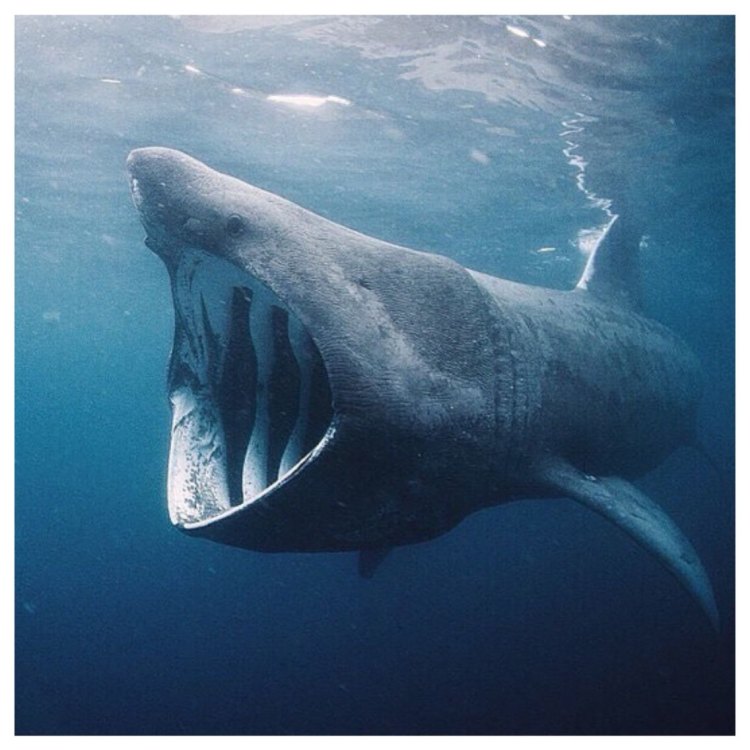
Basking Shark
- Adult Size: Up to 10 meters (33 feet)
- Average Lifespan: Around 50 years
- Reproduction: Ovoviviparous
- Reproductive Behavior: Mating occurs in summer
- Sound or Call: Unknown
- Migration Pattern: Seasonal migrations
- Social Groups: Solitary
- Behavior: Slow-moving and non-aggressive
- Threats: Overfishing, accidental capture in fishing gear
- Conservation Status: Vulnerable
- Impact on Ecosystem: As a filter feeder, they help maintain balanced populations of planktonic organisms
- Human Use: Historically hunted for their liver oil and fins, currently protected in many countries
- Distinctive Features: Massive size, large gill slits, prominent dorsal fin
- Interesting Facts: Basking Sharks are the second-largest fish species in the world after whale sharks
- Predator: Orcas (Killer Whales)
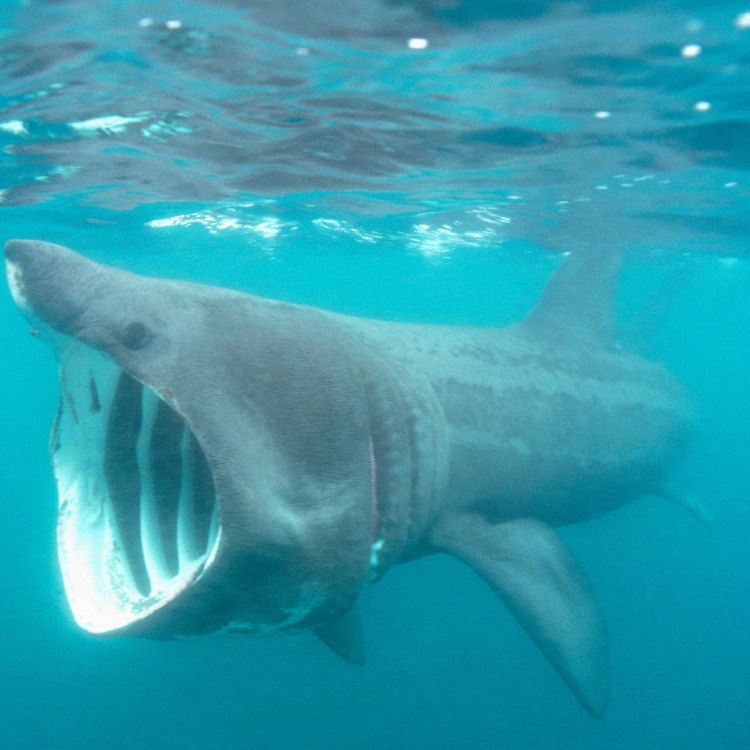
Cetorhinus maximus
Basking Sharks: Majestic Giants of the Ocean
As the sun sets over the horizon, a massive shadow glides through the calm waters. The sight might seem intimidating to some, but to those who know the ocean, it is a gentle giant passing by - the Basking Shark. Known for its massive size and slow-moving nature, this species of shark has captured the curiosity and fascination of humans for centuries. Let us dive into the depths of the ocean and discover the unique features of the Basking Shark PeaceOfAnimals.Com.The Basking Shark, scientific name Cetorhinus maximus, is the second-largest fish species in the world after whale sharks. They can grow up to 10 meters (33 feet) in length, which is equivalent to the size of a school bus! It is estimated that they can weigh up to 4,000 kilograms (8,800 pounds). These gigantic creatures are found in the temperate waters of the Atlantic, Pacific, and Indian Oceans. They have also been spotted in areas such as the Mediterranean Sea and the Gulf of Mexico.
On average, Basking Sharks have a lifespan of around 50 years. This may seem like a long time, but it is relatively short compared to other shark species. This could be due to their slow growth rate, as it takes them about 20 years to reach reproductive maturity. This means that their population can only increase at a slow rate, making them more vulnerable to threats such as overfishing.
Speaking of reproduction, Basking Sharks are ovoviviparous, which means that the females give birth to fully formed young, instead of laying eggs Boomslang. The embryos develop inside the uterus and receive their nourishment from egg yolk until they are born. Typically, a female Basking Shark can produce around six to 12 pups at a time, adding to the already small population.
Mating for Basking Sharks occurs in the summer, between the months of June to October. However, little is known about their mating behavior and courtship rituals, as it is rarely seen in the wild. It is believed that female Basking Sharks may have a preference for certain males, as studies have shown that multiple females have been found pregnant from the same male.
One of the most distinctive features of the Basking Shark is its massive size and large gill slits. These gill slits, which can measure up to 1.5 meters (4.9 feet) in length, are used to filter the water for food. As a filter feeder, the Basking Shark swims with its mouth wide open, allowing water to pass through its gills, trapping planktonic organisms for food. This unique feeding behavior contributes to their slow-moving nature and makes them the largest fish species in the world to feed on plankton.
While the Basking Shark may seem intimidating due to its massive size, they are known to be slow-moving and non-aggressive towards humans. They do not have teeth either, so there's no need to fear a bite! In fact, they are quite gentle, and divers have been known to swim alongside them without any harm. This docile nature has made them a popular tourist attraction, especially in areas such as Ireland and Scotland.
However, despite their harmless nature, Basking Sharks face numerous threats. Overfishing is one of the biggest threats to their survival. Historically, they were hunted for their liver oil and fins, which were used in cosmetics and meals. It is estimated that around half a million Basking Sharks were killed per year in the early 1900s. Since then, many countries have implemented protection laws, but they are still accidentally captured in fishing gear, leading to their decline.
The conservation status of the Basking Shark is currently listed as Vulnerable on the International Union for Conservation of Nature (IUCN) Red List. This means that their population is declining, and they face a high risk of extinction in the wild. Despite their slow reproduction rate, if conservation efforts are put in place, their population can slowly recover.
Aside from their role in the food chain, Basking Sharks also have a significant impact on the ecosystem. As filter feeders, they help maintain balanced populations of planktonic organisms, which are essential for the health of the ocean. If their population were to decline, it could have a domino effect on the entire ecosystem, affecting other marine species and even humans.
Basking Sharks are also involved in seasonal migrations, where they travel to different areas in search of food. These migrations can cover thousands of kilometers and are often seen in the Mediterranean, the Gulf of Maine, and the Atlantic coast of the United States. They are known to travel in solitary, rather than in social groups.
Despite their elusive nature, researchers have been able to gather some information about the Basking Shark through the use of technology and tracking devices. However, there is still so much to learn about these majestic giants of the ocean.
Another little-known fact about Basking Sharks is that they are preyed upon by Orcas, also known as Killer Whales. These predators have been known to use strategic hunting methods, such as ramming into the sharks to immobilize them. This serves as a reminder that even the largest creature in the ocean is not immune to danger.
In conclusion, the Basking Shark is a majestic and unique species with distinctive features and behaviors that set them apart from other sharks. As humans, it is our responsibility to protect and conserve these gentle giants, not only for their survival but also for the health of our oceans. By raising awareness and implementing conservation efforts, we can ensure that future generations will also have the opportunity to witness the beauty of the Basking Shark in the wild.
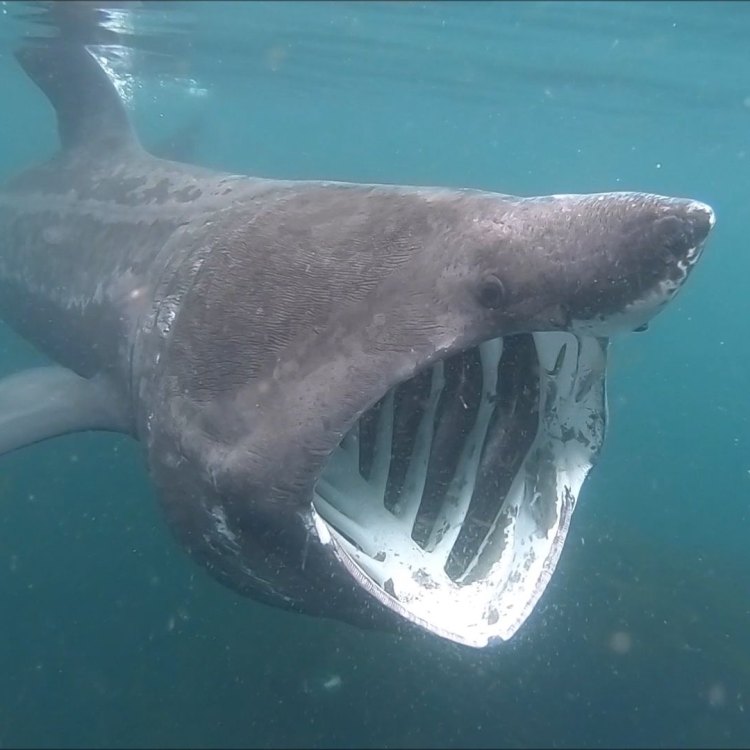
The Majestic Basking Shark: A Gentle Giant of the Ocean
Disclaimer: The content provided is for informational purposes only. We cannot guarantee the accuracy of the information on this page 100%. All information provided here may change without prior notice.

